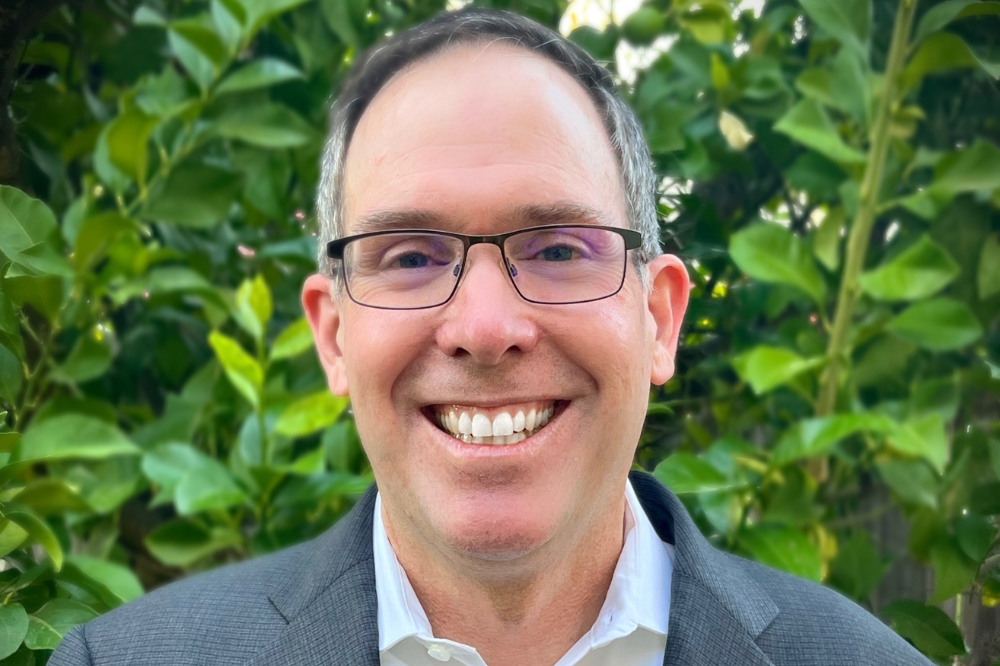Understanding present and future wildfire risks

“We work with companies to protect them from hazards such as wildfire, tornado, hail and so forth,” said GIA Map CEO and co-founder David Jowell (pictured). “We include their book of business, so we actively have not only future risk in mind, but current risks as well for active events and also future projections.”
Jowell and co-founder Alicia Naiman are insurance industry veterans, something that Jowell said helps make GIA Map’s technology approach a savvy one for the insurance industry. Jowell, a California native and 30-year industry veteran, has experience managing billions in wildfire and CAT risk exposure at companies including Kemper and Travelers insurance. Naiman, a director at GIA Map, brings with her substantial underwriting experience from companies including First American Property & Casualty Insurance and also Kemper.
“We came from the insurance industry, and we faced the same dilemmas they face daily,” Jowell said. “We can help them from a very different perspective, which is an industry perspective.”
So far, the company has four employees. It is self-funded, profitable and has attracted several customers, Jowell noted, including carriers both admitted and non-admitted, MGAs and MGUs.
Service first
Jowell describes GIA Map as an SaaS company. The technology is designed to be simple and straightforward. GI Map’s system can also be pulled up on a mobile phone.
“We have a web portal they can use to look at the risks on our maps … we also have a robust API where we can look into the front end and back end for customers,” Jowell explained. “We also can build custom-made landing pages for clients that may want that type of technology to present but don’t actually have the system ability right now.”
While technology such as APIs are part of the equation, there is also a big focus on the company’s ability to access and interpret data sources from multiple places.
“We’re looking at not only interfacing with what we do, which is wildfire predictions and projections, but also a constant turnover of events that actually happened,” Jowell said. “We have feeds from fire data sources, satellite intelligence, from heat indexes, but we can also go out and find events that are happening and put them into the location intelligence system.”
In addition, GIA offers software options such as its MapCheck tool – a 24/7 mapping eligibility portal. Customers can integrate their company appetite settings for risk location based on individual risk money limit, GIA wildfire score and aggregate or PML limit.
Jowell said GIA’s expertise is in some ways more important than the technology it uses.
“What we do as underwriters who have spent our career underwriting, is to look at the data and go beyond that,” Jowell said. “To really look at wildfire scoring, for example, a lot of what companies do is rate the brush or the forest or the fuel, not look at the actual neighborhoods where the fire is going to get into. Fire doesn’t stop when the fuel stops, but a lot of scoring mechanisms do that because that’s where the data stops.”
GIA stands out, Jowell asserted, because his company’s collective human experience helps supplement the technology. This includes experience “looking at neighborhoods, reading them, looking at their defensive ability, their access points, and looking at it from the standpoint of our experience talking to firefighting professionals, and also watching fire history to understand where fires are going to go,” Jowell said.
Smart use of data
Jowell noted the company relies strategically on contemporary technology such as APIs, but he believes tech “has to pass the sniff test” before it can be effectively used.
“Just because you have 1,000 points of data doesn’t mean those 1,000 points of data are relevant to the insurance underwriting decision-making process,” Jowell said. “As a matter of fact, that might actually lead to paralysis where you have too much information. Trying to actually make the decision needs to be much more simplistic.”
While GIA Map may look at venture capital sometime in the future, there are no plans to seek outside funding at present, Jowell said.
For now, he said, the focus is on the company’s existing client base and adding new ones, client by client.
Remaining a smaller company for now is a very good thing, he said.
“We have the ability to be incredibly agile,” Jowell said.




